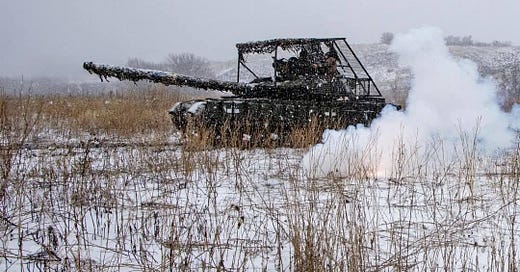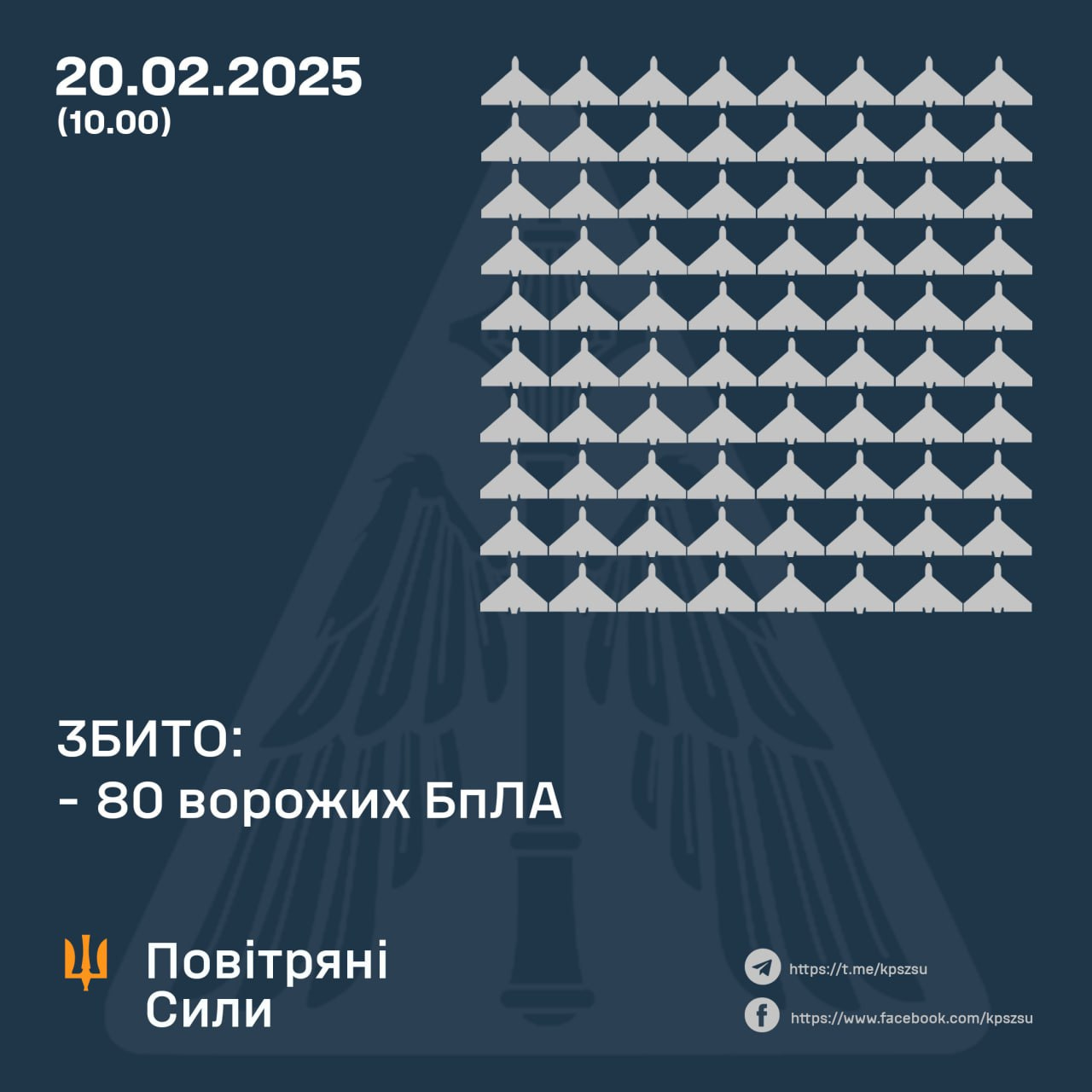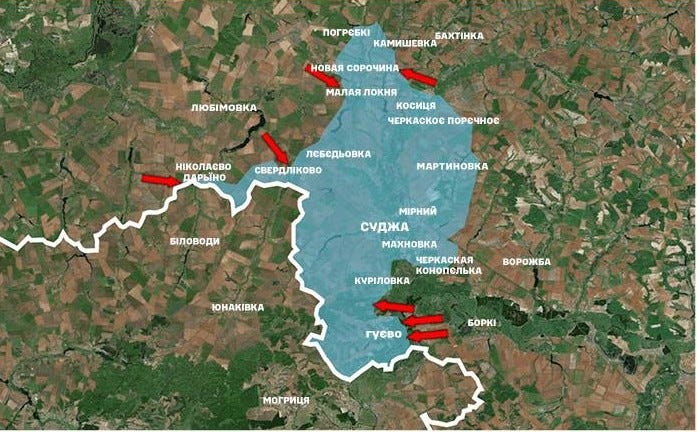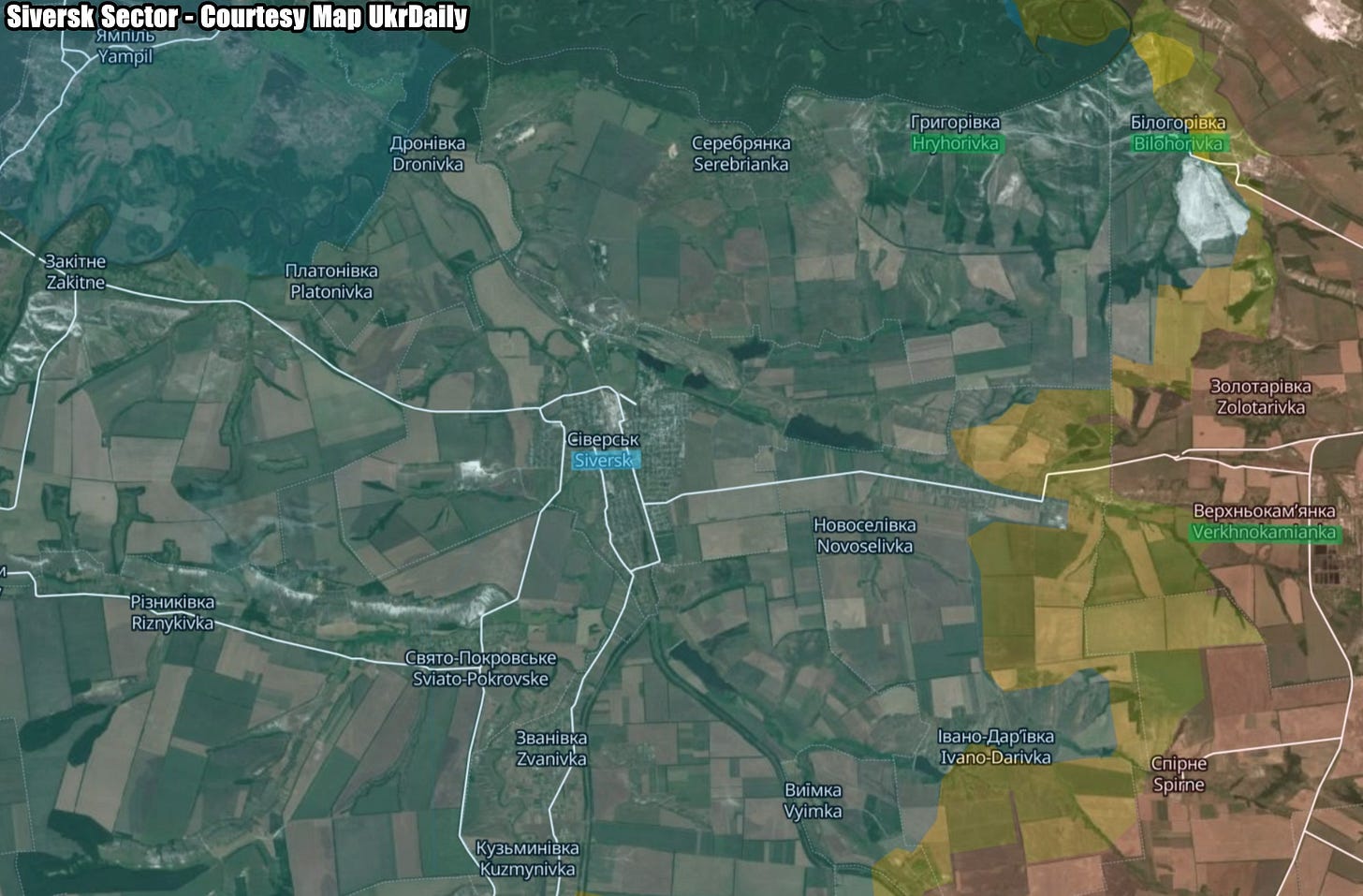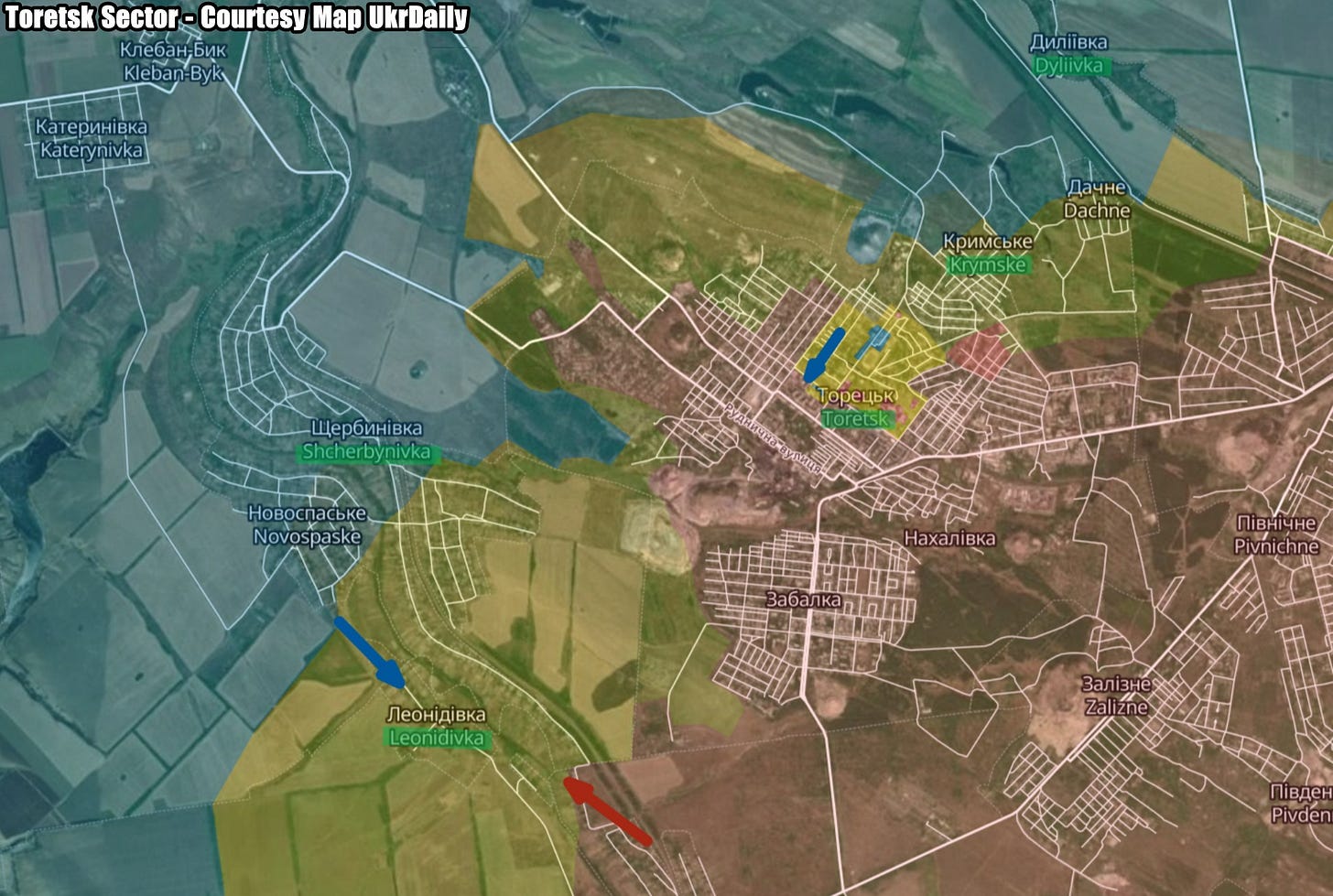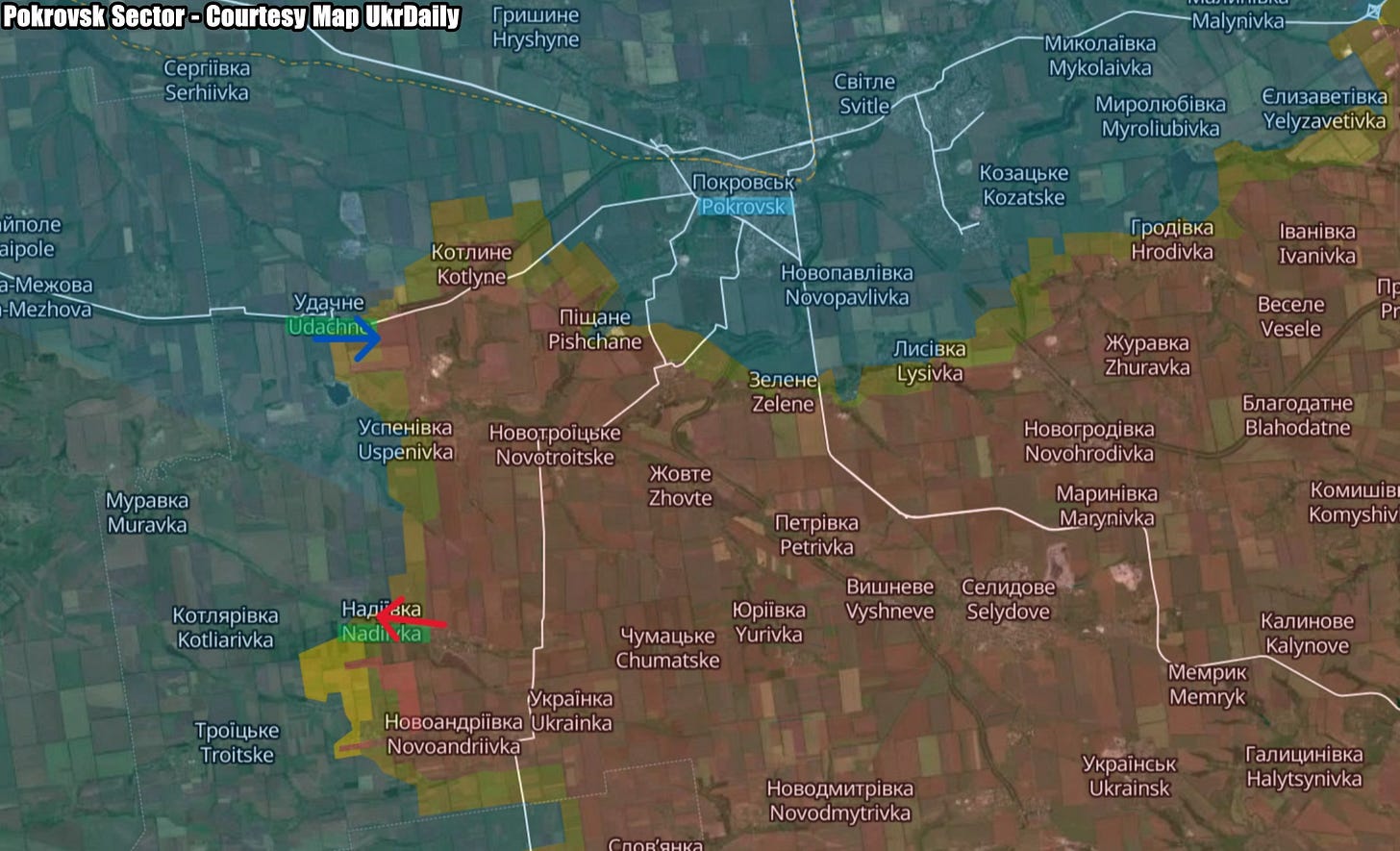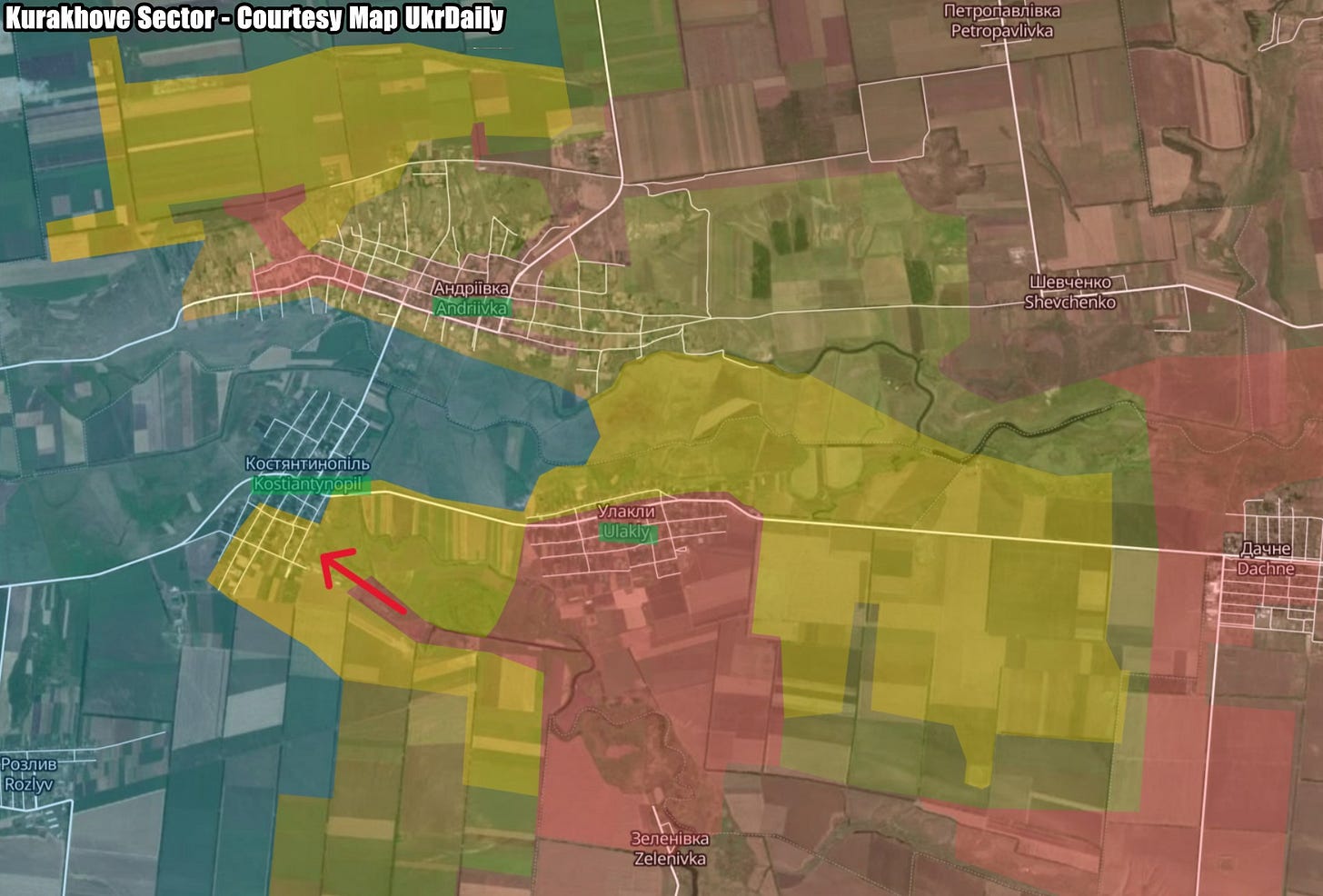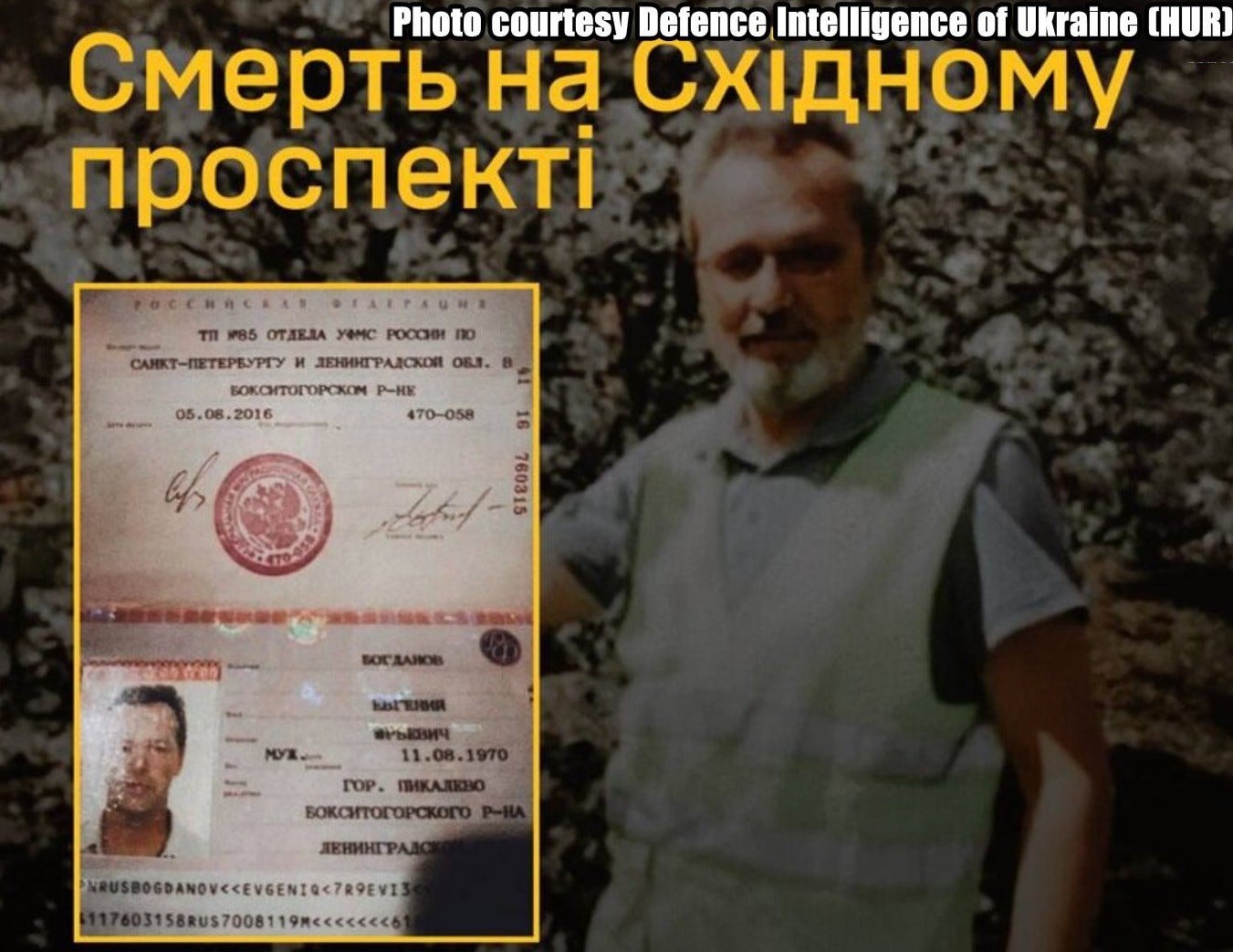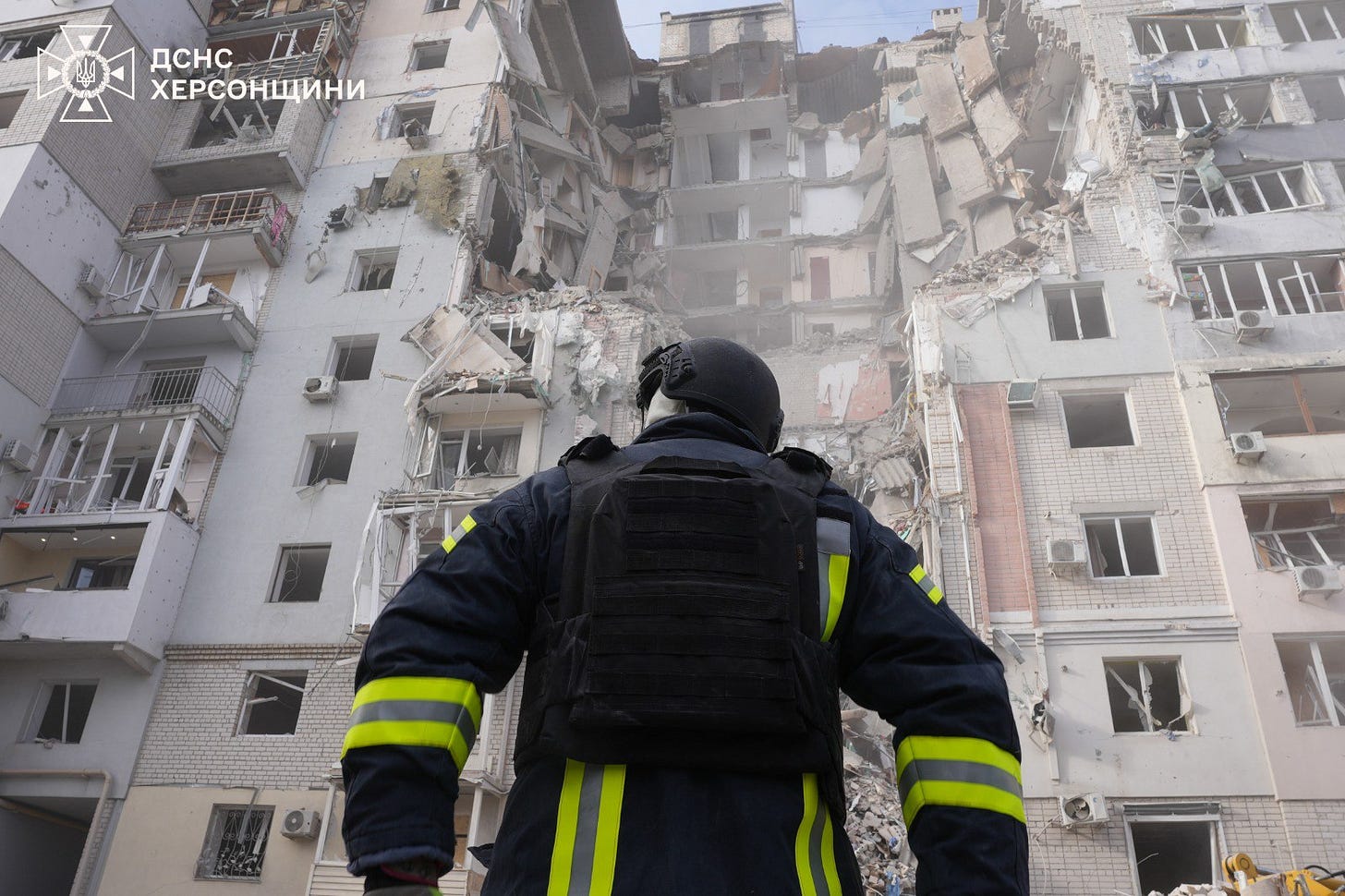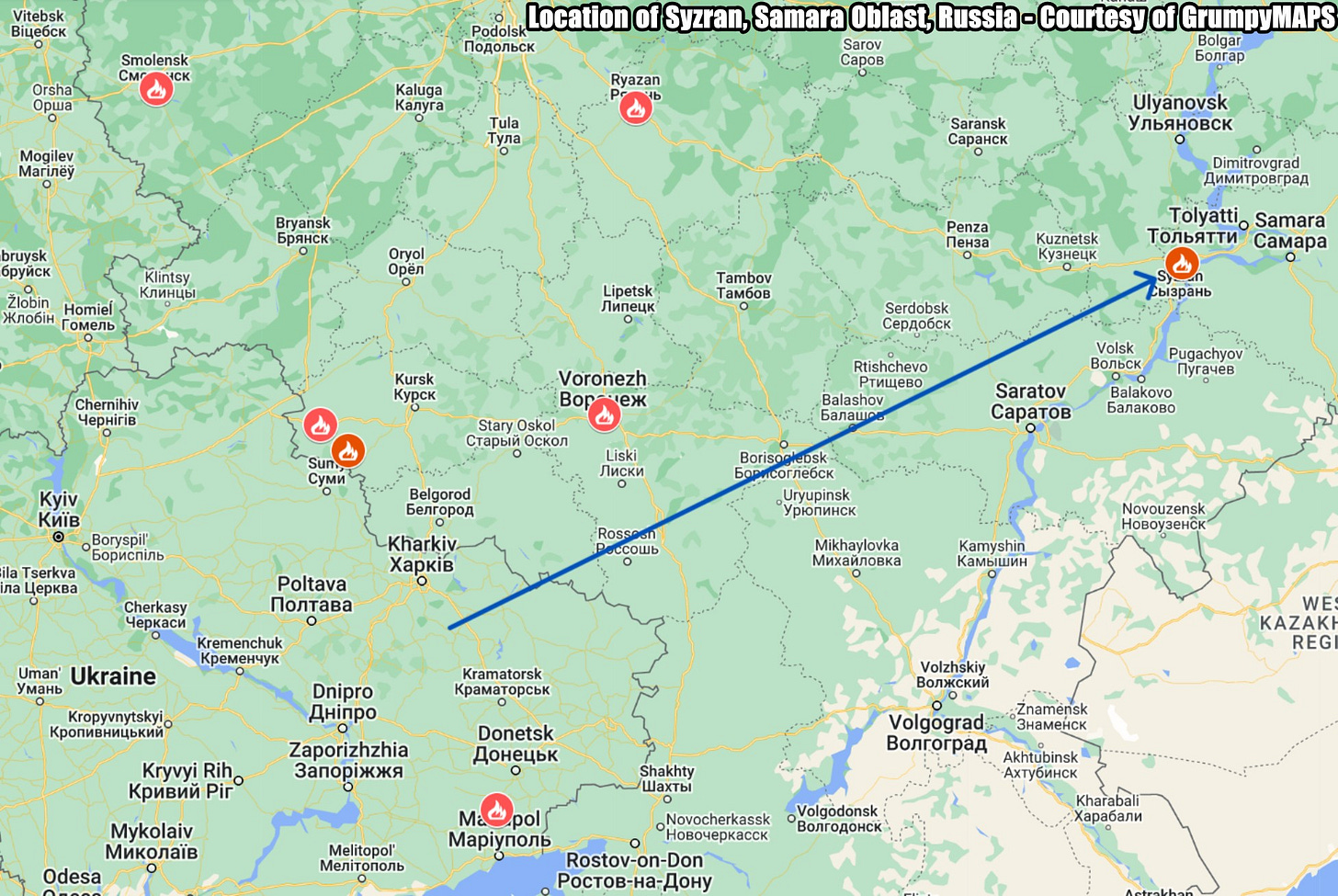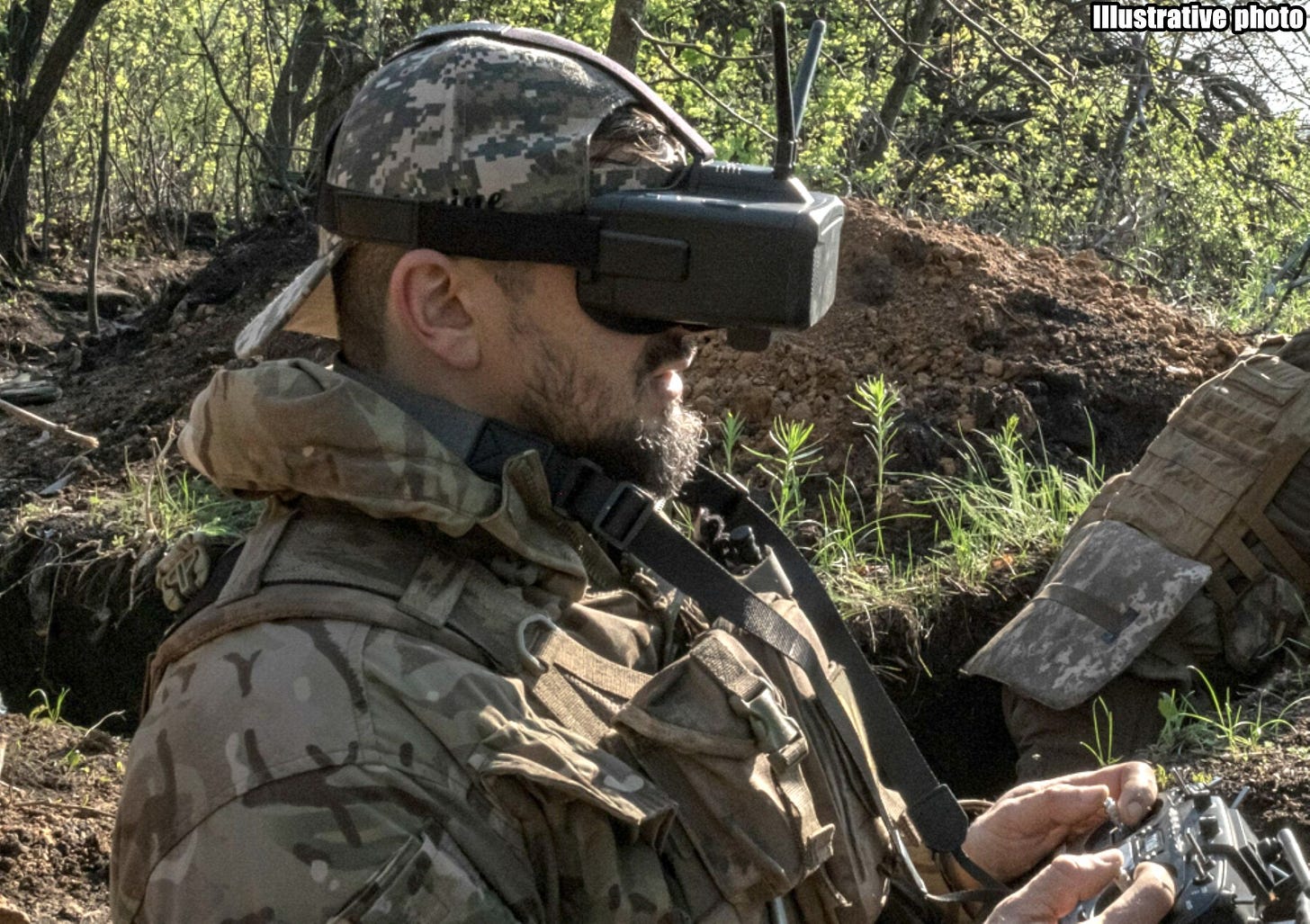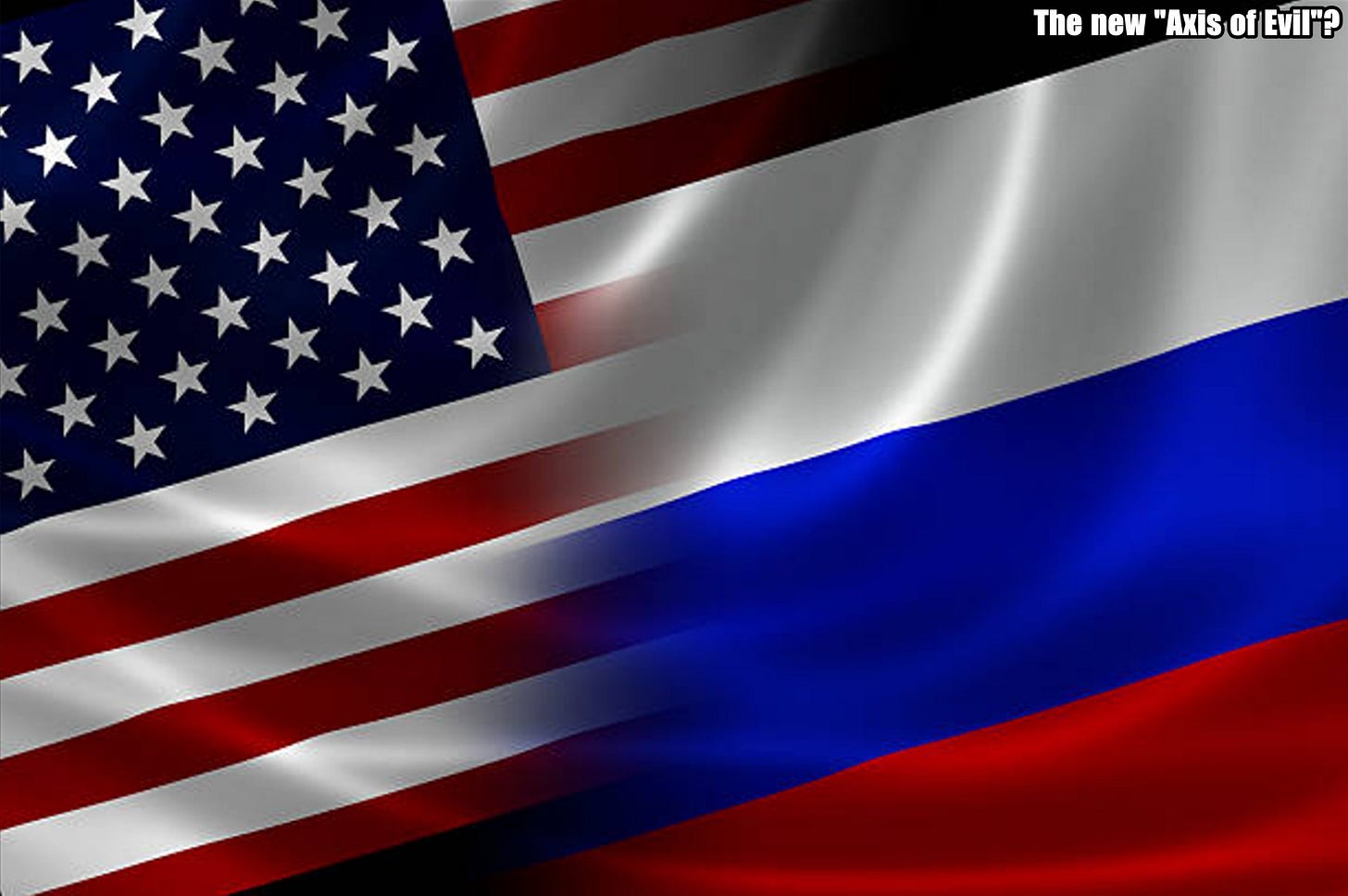Slava Ukraini! In early 2022 I began a Telegram channel aggregating news from a number of sources daily on the war in Ukraine. In June 2023 I began providing a daily draft for the Ukraine War Brief Podcast collecting news from over 70 sources daily, which formed the basis of the script. While the Podcast no longer exists I have continued to make this Brief available for my followers here on Substack for those who wish to keep up with the news from the war.
All the latest news on the Russo-Ukraine War 6 days per week
ALONG THE CONTACT LINE
GSAFU Morning Report
The General Staff of the Armed Forces of Ukraine in its Operational Information update at 08:00 on Feb 20 stated that day 1093 of the full-scale invasion of the Russian Federation against Ukraine had begun.
The situation on the line of combat remains tense in some sectors. Ukrainian defenders continue to actively counteract the Russian aggressor, causing them significant losses in personnel, equipment and technology. Exhausting the enemy along the entire front line and continuing to disrupt the plans of Russian occupiers to advance deeper into the territory of Ukraine.
During the past day, 122 combat engagements took place.
Over the past 24 hours, the enemy carried out 1 missile strike, 87 air strikes, used 3.000 drones and fired approximately 5,750 artillery shells across the positions of Ukrainian forces and civilians.
Air Force Daily Report
80 ENEMY UAVS SHOT DOWN, 78 DRONES FAILED TO REACH THEIR TARGETS (LOCATIONALLY LOST)
➖➖➖➖➖➖➖➖➖
On the night of Feb 20, 2025, the Russian occupiers carried out a combined strike with various types of air, ground, and sea-based missiles on critical infrastructure facilities in the Kharkiv region.
In total, 14 missiles were used: cruise missiles - Kh-101/Kh-55cm (launched from the Volgograd region), Kalibr/Iskander-K (from the Black Sea/Crimea); ballistic missiles - Iskander-M/KN-23 (launched from the Voronezh region). Information on the results of combat operations and the consequences of the missile strike is not made public.
In addition, the enemy attacked with the 161st Shahed strike UAV and other types of drone simulators from the following directions: Millerovo, Orel, Bryansk, Kursk, Primorsko-Akhtarsk — Russia.
Aviation, anti-aircraft missile units, electronic warfare equipment, and mobile fire groups of the Air Force and Defense Forces of Ukraine were involved in repelling the enemy air attack.
As of 10:00, it has been confirmed that 80 Shahed attack UAVs and drones of other types have been shot down in Kharkiv, Poltava, Sumy, Kyiv, Cherkasy, Chernihiv, Kirovohrad, Dnipropetrovsk, Kherson, Mykolaiv, and Odessa regions.
78 enemy drone simulators were lost in location (without negative consequences).
The Kharkiv, Sumy, Odesa, and Kyiv regions were affected by the enemy attack.
Combat Operations in the Kursk Sector, Russian Federation
The Institute for the Study of War (ISW), a US based think tank, in its Feb 19 Russian Offensive Campaign Assessment reported that Russian forces continued offensive operations in Kursk Oblast on Feb 19 but did not make any confirmed advances. Russian forces continued ground attacks northwest of Sudzha near Sverdlikovo, north of Sudzha near Pogrebki, and southeast of Sudzha near Guyevo. Russian sources claimed that Ukrainian forces counterattacked near Sverdlikovo.
The Khortytsia operational-strategic group
(Responsible for the northeastern part of Ukraine. )
Kharkiv Sector: Ukrainian forces recently advanced northeast of Kharkiv City. Russian forces continued limited ground attacks northeast of Kharkiv City near Vovchansk on Feb 19.
Geolocated footage published on February 18 indicates that Ukrainian forces recently advanced within central Vovchansk.
An officer in a Ukrainian brigade operating near Vovchansk stated that Russian forces have increased the intensity of their ground attacks in Vovchansk during colder weather as part of efforts to advance to the southern bank of the Vovcha River.
Borova Sector: Russian forces recently advanced in the Borova direction. Russian forces conducted offensive operations northeast of Borova near Zahryzove and Lozova, east of Borova near Kopanky, and southeast of Borova near Makiivka on Feb 18 and 19.
The Ukrainian General Staff published a map on Feb19 indicating that Russian forces recently seized Zelenyi Hai (east of Borova).
Siversk Sector: Russian forces recently advanced in the Siversk direction. Russian forces conducted offensive operations northeast of Siversk near Hryhorivka and Bilohorivka and east of Siversk near Verkhnokamyanske on Feb 18 and 19
The Ukrainian General Staff published a map on Feb 19 indicating that Russian forces recently advanced north of Mykolaivka (southwest of Siversk).
Toretsk Sector: Russian forces conducted offensive operations near Toretsk itself; northeast of Toretsk near Ozaryanivka, Dyliivka, and Krymske; east of Toretsk near Leonidivka; and west of Toretsk near Shcherbynivka on Feb 18 and 19. A Russian milblogger claimed that Ukrainian forces are counterattacking near Krymske.
Geolocated footage published on Feb 18 indicates that Ukrainian forces recently advanced in eastern Shcherbynivka.
The Tavria operational-strategic group
(Responsible for the central-eastern and southeastern part of Ukraine.)
Pokrovsk Sector : Russian forces recently advanced in the Pokrovsk direction. Russian forces continued attacking northeast, southeast, south and southwest of Pokrovsk on Feb 18 and 19. Ukrainian military observer Kostyantyn Mashovets stated that Ukrainian forces successfully counterattacked near Dachenske and advanced south of the settlement. Russian milbloggers claimed that Ukrainian forces counterattacked in several areas.
Geolocated footage published on February 19 indicates that Russian forces recently advanced north of Nadiivka.
Kurakhove Sector: Russian forces recently advanced in the Kurakhove direction. Russian forces continued attacking west of Kurakhove near Kostyantynopil, Andriivka, and Ulakly and toward Oleksiivka and southwest of Kurakhove near Rozdolne on Feb 18 and 19.
Geolocated footage published on February 16 indicates that Russian forces recently advanced southeast of Kostyantynopil.
Velyka Novosilka Sector: Russian forces recently advanced in the Velyka Novosilka direction. Russian forces conducted offensive operations northwest of Velyka Novosilka towards Burlatske, west of Velyka Novosilka near Novosilka and towards Pryvilne, and southwest of Velyka Novosilka near Novopil on Feb 18 and 19.
Geolocated footage published on February 15 indicates that Russian forces recently advanced to southeastern Novoocheretuvate (north of Velyka Novosilka).
The Odesa operational-strategic group
(Responsible for Kherson, Qırım, (also known as Crimea) and the Black Sea.)
There have been no major changes to the combat environment since our last report.
TEMPORARILY OCCUPIED TERRITORIES
Russian war criminal Bogdanov eliminated in Berdiansk.
On 20 February 2025, a grey Renault Duster car carrying the deputy head of the occupation military administration, Russian Yevhen Bohdanov, exploded on Vostochnyi Avenue in the temporarily occupied Berdiansk, Censor.NET reports citing the Defence Intelligence of Ukraine (HUR)
"On 20 February 2025, at 6:05 a.m., a grey Renault Duster exploded near the 96th house on Vostochnyi Avenue in the temporarily occupied Berdiansk, burning to the ground; the Russian occupation services arrived at the scene," the source said.
Bohdanov is a citizen of the Russian aggressor state, who formally held the position of the so-called deputy head of the occupation administration of Berdiansk.
It is noted that the responsibilities of the Russian invader included, in particular, control over finances in the occupation administration and the organisation of the construction of fortifications in the temporarily occupied areas of Zaporizhzhia region.
During his stay in the occupied Ukrainian territories, Bogdanov repeatedly committed war crimes against Ukrainian citizens.
Yevhen Bohdanov was born on 11.08.1970 in Pikalovo, Leningrad region. He arrived in Berdiansk immediately after the city was captured by the aggressor state in 2022. He was appointed to the occupation administration on the instructions of the Russian special services.
THE HOME FRONT
Russian mass attack targets Ukraine's gas facilities.
Russian forces targeted Ukraine's gas infrastructure in a mass drone and missile attack overnight on Feb. 20, the Kyiv Independent reported citing Energy Minister Herman Halushchenko.
Russia has repeatedly targeted Ukrainian energy infrastructure with missiles and drones over the course of the war, including gas storage facilities in Ukraine's west.
Russia launched 161 Shahed-type attack drones and decoy drones and 14 Kh-101/55SM cruise missiles, Kalibr/Iskander-K cruise missiles, and Iskander-M/KN-23 ballistic missiles against Ukraine this night, the Air Force said.
The attack damaged gas production facilities, Halushchenko said, without disclosing their locations. Explosions were reported in Kyiv, Odesa, and the adjacent regions.
Russian aerial strikes targeted an energy facility of Ukraine's DTEK company in Odesa Oblast. A total of 49,000 consumers remained without power as of 9 a.m. local time, Governor Oleh Kiper said.
The full consequences of the Russian attack are being determined. Restoration works are ongoing.
"The purpose of these criminal attacks is to stop the production of gas needed to meet the household needs of citizens and centralized heating," the minister said.
In early February, Halushchenko said that Russian strikes had severely impacted Ukraine's domestic gas production capacity and that the country would need to import an estimated 1 billion cubic meters of gas by the end of the year.
Updated: 7 killed, 30 injured in Russian attacks on Ukraine over past day.
Russian attacks across Ukraine killed at least seven civilians and injured at least 30 over the past day, regional authorities reported on Feb. 20.
Russia launched 161 Shahed-type attack drones and decoy drones and 14 Kh-101/55SM cruise missiles, Kalibr/Iskander-K cruise missiles, and Iskander-M/KN-23 ballistic missiles against Ukraine overnight, the Air Force said.
Ukrainian air defenses shot down 80 drones over 11 oblasts, while 78 drones were lost without causing damage, according to the statement. The consequences of the missile attacks were not disclosed.
Three people were killed and 10 injured in Russian attacks against Donetsk Oblast, Governor Vadym Filashkin reported.
Russian forces dropped four guided aerial bombs on the city of Kostiantynivka on the morning of Feb. 19, killing two people and injuring eight while damaging 34 houses, the governor said.
One civilian was also killed in Predtechyne, and two were injured in Pokrovsk, according to the statement.
Two people were killed and 13 injured, including two children, in Kherson Oblast, Governor Oleksandr Prokudin said. Three apartment buildings and 13 houses were damaged.
In Kharkiv Oblast, two men aged 59 were killed during Russian attacks against Kupiansk, while five other civilians were injured in the town and elsewhere in the region, Governor Oleh Syniehubov reported.
Two men were injured during Russian attacks against the Vasylivka and Polohy district in Zaporizhzhia Oblast, according to Governor Ivan Fedorov.
Russian aerial strikes targeted an energy facility of Ukraine's DTEK company in Odesa Oblast overnight, the company announced. Governor Oleh Kiper said that 49,000 consumers remain without power as of 9 a.m. local time as repairs continue.
RUSSIAN WORLD
Ukrainian strikes continue to affect Russian oil production and shipment.
The Institute for the Study of War (ISW), a US based think tank, in its Feb 19 Russian Offensive Campaign Assessment reported that Ukrainian forces continue to conduct drone strikes against Russian energy facilities supplying the Russian military.
Head of Ukraine's Center for Combatting Disinformation Lieutenant Andriy Kovalenko stated that Ukrainian forces struck the Rosneft Syzran Oil Refinery in Syzran, Samara Oblast on the night of Feb 18 and 19. Kovalenko noted that the refinery has a processing capacity of 8.9 million tons of oil per year and produces fuel, jet fuel, and bitumen. Kovalenko stated that Russian refineries play an important role in supplying Russian troops. Kovalenko stated that the oil refinery stopped operating after the strike, and Reuters, citing two industry sources, also reported that the refinery suspended oil processing after the drone strike caused a fire at the primary refining unit.
The industry sources told Reuters that the Syzran refinery had been operating at only 4.7 million tons of capacity in 2024 at least in part due to previous Ukrainian strikes. Russian opposition outlet Astra published footage on February 19 of a fire at the refinery, which was later geolocated to within Syzran. Samara Oblast Governor Vyacheslav Fedorishchev claimed that Ukrainian forces struck the Syzran Oil Refinery but that there was no "major" damage.
Ukraine behind FPV goggles explosions in Russia.
A Ukrainian military intelligence (HUR) operation was behind the detonations of goggles for first-person-view (FPV) drones used by Russian soldiers, the Kyiv Independent reported on Feb. 20 citing a HUR source.
The news comes after Russian pro-war Telegram channels reported a series of explosions of FPV goggles while they were being used by Russian drone operators.
According to the source, HUR bought a large batch of FPV goggles for the operation and rigged them with explosives and a detonation mechanism.
"Russian volunteers" subsequently donated the goggles to Russian drone units "in coordination" with the agency, according to the source.
"Today, the horrors of war are literally happening right before the eyes of Russian FPV pilots. This is a well-deserved punishment for the war crimes that the Russian occupiers commit against Ukraine every day," the HUR source said.
Throughout Russia’s full-scale invasion, Ukraine and Russia have heavily invested in drone technology, revolutionizing warfare.
Various aerial, naval, and ground drones have been developed and often successfully used for reconnaissance, combat, and other tasks by Ukrainian troops.
FPV drones are cheap to manufacture and can be precisely flown into targets, allowing their users to destroy much more expensive military equipment.
INTERNATIONAL NEWS
West’s ‘crisis’ coalition grows as Trump rails against Zelenskyy.
Forget about NATO and the EU. Western leaders are building a new diplomatic framework to deal with Trump’s alignment with Moscow.Politico EU reports.
A new coalition of nations is emerging to deal with the greatest security crisis to hit Europe in decades, as President Donald Trump on Wednesday squarely aligned U.S. interests with the Kremlin's by unleashing excoriating tirades against Ukrainian President Volodymyr Zelenskyy, whom he branded a "dictator."
The new grouping is made up of all the countries that once saw themselves as indefectible allies of the United States, but are now questioning the very foundations of that relationship as Washington embraces Russia and ramps up its attacks against NATO allies.
The group started taking shape this week in the wake of the Munich Security Conference when French President Emmanuel Macron invited a small number of like-minded countries to Paris on Monday to discuss the implications of Washington's embrace of Russia over Ukraine.
By Wednesday, that initial group — composed of the leaders of France, the United Kingdom, Poland, Germany, Italy, Spain, the Netherlands and Denmark, plus the heads of NATO, the European Commission and Council — had more than doubled, widening to 19 nations including Canada. Non-EU countries such as Norway and Iceland attended as well.
As host of Wednesday's talks, Macron pushed back against Trump and insisted that Russia started the war, rather than Zelenskyy, as Trump claimed. The French president said the new grouping sought Ukrainian involvement in the talks and insisted on the need for security guarantees for Kyiv.
Most critically, Macron said it was unacceptable for the U.S. and Russia to negotiate over European leaders' heads. "The security concerns of the Europeans will have to be taken into account," he stressed.
"There's an ideological dimension to this group, post-Munich," said Luuk van Middelaar, founding director of the Brussels Institute for Geopolitics. "The fact that we are talking in this format one week after the Trump-Putin phone call is a sign of how fast things are changing in the world."
The list of the attendees largely overlaps with the membership of NATO and the European Union, but with a few major differences. The United States isn't a part of it, and neither are Russia-aligned Hungary and Slovakia. Nor is NATO member Turkey, though several commentators have called for Ankara to be included in future talks.
NATO would traditionally be the go-to forum for any discussion concerning major security challenges facing Western countries, not least the Ukraine war. But in the wake of Trump's embrace of Moscow and his escalating attacks on Zelenskyy, Western countries are grasping for new configurations.
"Politicians in times of crisis, we talk in all kinds of configurations among friends and allies, and that's a good thing," said Polish Foreign Minister Radosław Sikorski.
Van Middelaar said the Paris format should be compared to a "crisis response unit."
"When a crisis hits, you always get formal or informal inner circles," he added. "In situations like this, you have to balance the desire for inclusivity against the need for swift action. Formal decisions won't be taken in these formats, but they will be prepared."
Indeed, the emergence of the Paris group — alongside the "Weimar" format (of Paris, Berlin and Warsaw), or the Nordic-Baltic group — underscores the failure of EU formats to address the scale of the crisis.
Normally, the EU's 27 leaders come together as the European Council to address shared challenges. But the president of that institution, António Costa, has so far held off on calling a meeting in that format, unsure of being able to show tangible results, according to two EU diplomats who were granted anonymity to discuss the private deliberations.
Instead of a formal European Council, EU ambassadors have gathered twice this week in the so-called Coreper format to talk about sending arms to Ukraine and boosting defense.
But those discussions were overshadowed by the leaders' huddles on Monday and Wednesday — with ambassadors discovering in the midst of one of their meetings this week that Macron called for a second round of talks among leaders, according to one EU official.
"We are outside the core of the EU's functioning," said a third EU diplomat. "This is something that is happening outside and around the machinery in Brussels."
US refuses to co-sponsor UN motion backing Ukraine.
The U.S. is refusing to co-sponsor a draft U.N. resolution marking three years since Moscow's invasion of Ukraine that backs Kyiv's territorial integrity and condemns Russian aggression, Reuters reports citing three diplomatic sources, in a potential stark shift by Ukraine's most powerful Western ally.
The step appears to mirror a widening rift between Ukrainian President Volodymyr Zelenskiy and U.S. President Donald Trump, who is trying to rapidly end the war in Ukraine and whose team has held talks with Russia without the involvement of Kyiv.
The row is a major political crisis for Ukraine, which has used tens of billions of dollars of U.S. military aid agreed under the previous U.S. administration to weather Russia's invasion and also benefited from diplomatic support.
The draft resolution for the U.N. General Assembly, seen by Reuters, condemns Russian aggression and reaffirms a commitment "to the sovereignty, independence, unity and territorial integrity of Ukraine within its internationally recognised borders".
"In previous years, the United States has consistently co-sponsored such resolutions in support of a just peace in Ukraine," one of the sources, who like the others requested anonymity to discuss sensitive matters, said on Thursday.
The first diplomatic source told Reuters that the resolution was being sponsored by more than 50 countries, declining to identify them.
A spokesperson for the U.S. diplomatic mission to the United Nations in Geneva did not immediately respond to a request for comment.
Russia has seized some 20% of Ukraine and is slowly but steadily gaining territory in the east. Moscow said its "special military operation" responded to an existential threat posed by Kyiv's pursuit of NATO membership. Ukraine and the West call Russia's action an imperialist land grab.
The United States has been a co-sponsor of almost all U.N. resolutions in support of Ukraine against Russia throughout the biggest conflict on European soil since World War Two.
It was not immediately clear when the deadline to back the draft resolution expires, and Washington could still change its mind.
The U.N. vote, seen as an important bellwether of global support for Ukraine in the face of the Trump administration seeming shift towards Russia's position in the war, could still go ahead without U.S. backing, but might be less likely to win broad support in the General Assembly.
A second diplomatic source who also requested anonymity said: "For now, the situation is they (the U.S.) won't sign it." Efforts are ongoing to seek support from other countries instead, including the Global South, the source added.
MILITARY & TECH
Ukraine’s high-tech war: how digital alerts save civilians.
Ukraine has developed one of the world’s most advanced automated air raid alert systems, saving thousands of lives from daily Russian missile and drone attacks. Defence Blog’s Dylan Malyasov reports.
Unlike most nations, only Ukraine and Israel operate real-time, automated public alert systems designed to warn civilians of incoming deadly threats. However, due to the scale and frequency of attacks, Ukraine’s system has evolved with unique features that provide critical, life-saving warnings to residents across the country.
The Ukrainian air raid alert system operates through a network of sirens, mobile applications, and push notifications. It integrates real-time intelligence gathered by the Civil Defense Department and military regional administrations. Emergency response teams from the State Emergency Service (DSNS) coordinate the warnings to ensure rapid dissemination of alerts based on the threat type and trajectory of incoming strikes.
Ukraine’s early warning system issues alerts tailored to the specific nature of threats. When Russian strategic bombers such as the Tu-95, Tu-22M3, or Tu-160 begin taxiing on the runway, or when Russian warships carrying Kalibr cruise missiles leave port, alerts are immediately issued, sometimes providing up to 4-6 hours of advance warning. The system also detects drone launches, such as Iranian-made Shahed loitering munitions, often giving residents an hour to seek shelter. However, the response time for ballistic and hypersonic missile threats is significantly shorter, usually between 5 to 10 minutes, making even a few seconds’ warning critical for survival.
To enhance accessibility, developers have also introduced a dedicated mobile application, “Alarm Map,” which provides real-time updates on air raid warnings. The app integrates directly with other online monitoring services and social media channels, ensuring widespread distribution of alerts. This level of integration allows civilians to track threats dynamically and make informed decisions about when to seek shelter.
Despite its effectiveness, the system has inherent challenges. Russian forces frequently conduct complex, multi-wave attacks designed to terrorize the civilian population. These attacks often include long-duration drone strikes, sometimes lasting over 24 hours. By launching drones in waves throughout the day, Russia ensures a persistent threat to Ukraine’s energy infrastructure, urban centers, and military targets.
Another significant issue is public complacency. After nearly three years of full-scale war, some civilians have become desensitized to air raid sirens. Over time, repeated alerts without immediate impact in their area lead some people to ignore warnings, increasing the risk of casualties. Additionally, while the system provides an early warning of incoming threats, it does not always predict the exact target of a strike, making it difficult for residents to assess personal risk.
Despite these challenges, Ukraine’s digital air raid alert system continues to play a crucial role in protecting its people. As the country faces near-daily missile and drone attacks, these technological advancements provide the population with critical seconds or minutes to take cover, preventing further loss of life.
Ukrainian defense forces remain committed to intercepting and neutralizing threats, while civilians rely on real-time alerts to navigate the ongoing war’s dangers.
That’s it for today’s Brief folks if you would like to keep up with events in Ukraine daily please consider subscribing, it’s free!


